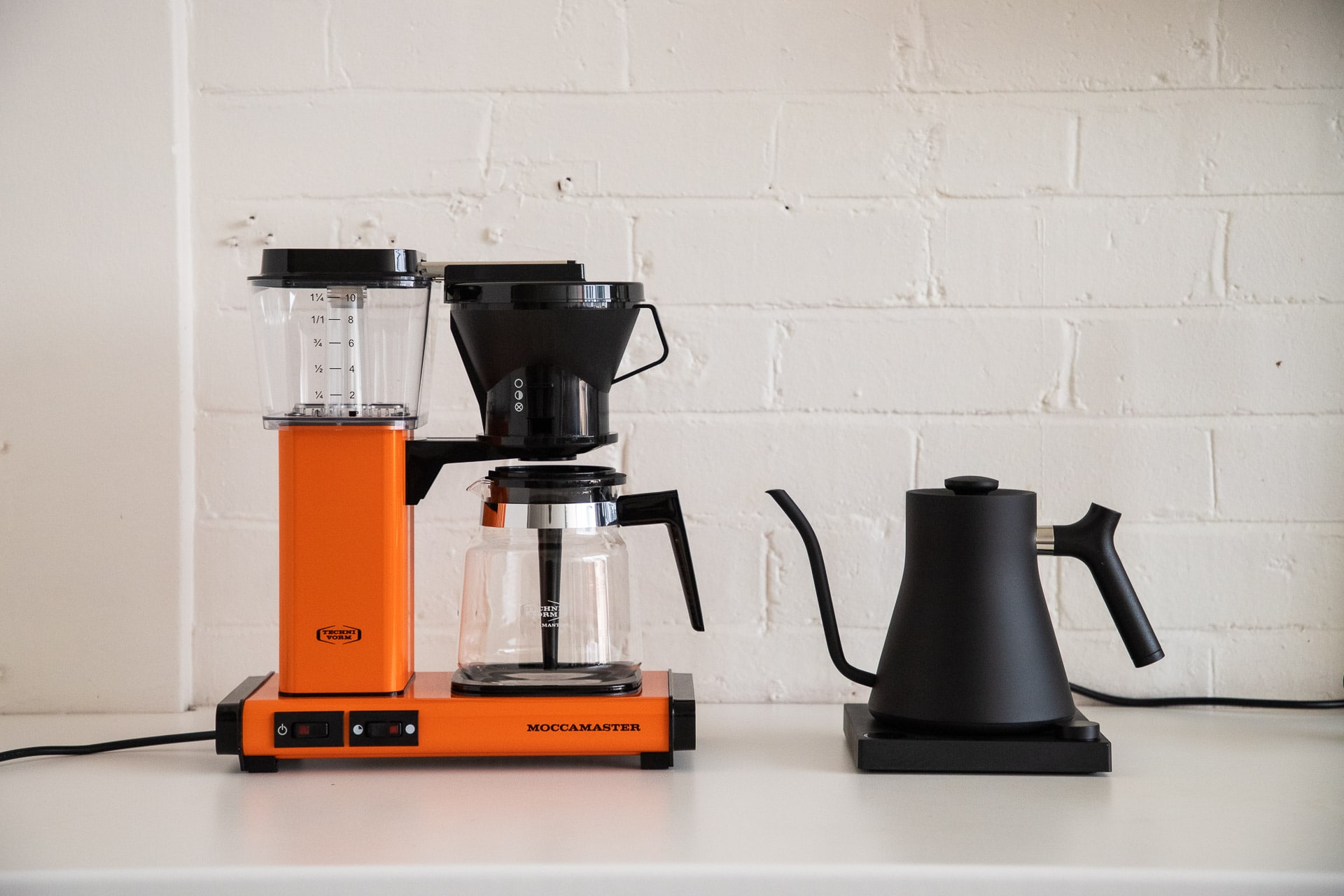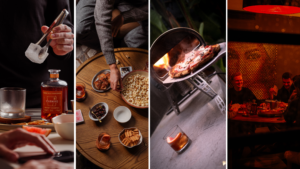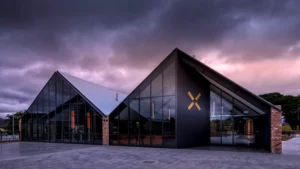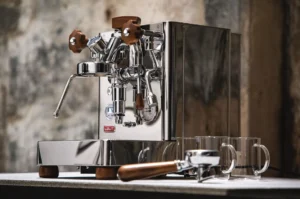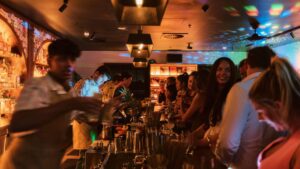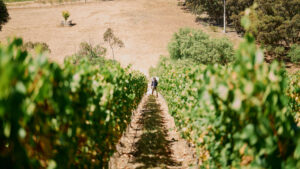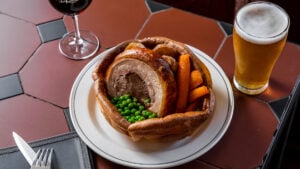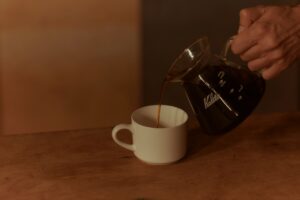Brewing great pour over coffee is an art form, and depending on how fastidious your approach is, can require immense levels of dedication and detail – which is part of the attraction for so many.
When talking about brewing the perfect cup of coffee, we are describing the ideal extraction of those lust worthy flavours, from fresh coffee grounds, with utmost precision.
In our quest to convert the BH team to pour over snobs, we enlisted the help of Australia’s ‘Alternative Brewing‘ specialists. Let’s dive into the ultimate pour over coffee guide, from getting the paper filter and hot water right, to extracting that ground coffee. Soon enough, your coffee pour will be on par with the pros, you’ll just need to get across the various coffee brewing methods in this piece.
Whether you’re new to pour-over coffee or a seasoned vet, if you’ve ever used a French press you’re halfway to brewing coffee the ideal way. A best result for both approaches starts with fresh coffee, a perfect grind and water (off the boil) distributed over the grind evenly before letting it brew for the appropriate amount of time.
RELATED: The Best Coffee Machines In Australia For Home Baristas
What Is Pour Over Coffee?

Water is poured over coffee grounds with the goal of even, layered extraction resulting in a great cup of coffee. That may seem like an overly simplistic way to brew coffee, but it gets a bit more complicated than that when you consider all the features of the coffee itself, the coffee brewing device, and other conditions.
That’s the long-short of what this traditional coffee brewing method is all about, and why it has been largely preferred by those who like to keep it simple.
The emblematic cone shaped coffee filters that have come to represent pour over coffee have reportedly been around since the 1950s, but today brewing perfect pour over coffee is largely considered a “lost art”.
This has given pour over coffee somewhat of a romantic status in the very diverse world of home brewed coffee. Unlike the classic French Press, which relies on immersion brewing, it simply involves manually saturating fresh coffee grounds with fresh (hot) water.
The coffee grounds sit in a coffee filter that’s cylindrical in its shape, so the water will move in a circle around the grounds as it swirls towards the bottom in a circular motion.
This tempered pace of extraction keeps the coffee grounds from becoming over-saturated and prevents coffee grinds from getting into the final brew.
And while the technique sounds simple – because it is – there are a number of variables that affect the nuances of what actually ends up.
Choosing the right filter is important to the coffee brew; the grind size and the freshness of the coffee will account for extraction; the water quality will greatly affect the texture of the coffee, as well the temperature; and the ratio of water to coffee (ideally 1:16) has a substantial effect on taste.
And of course, the rate of your pour matters a lot. It’s always best to allow the coffee to bloom after your first pour, and then continue pouring over the rest of the water with a very consistent, gradual pace.
Get these key factors right and you might never need to visit a barista again.
What Makes A Great Pour Over Coffee?
Technique and tools. It’s as simple as that; get those right and you’re golden, and well on your way to enjoying some quality pour over coffee at home.
The technique will be the Achilles’ heel of making good pour over coffee, but because each tool (coffee filters, electric kettle, etc.) requires a slightly different brewing method, we’ll jump into that further down the list.
So, let’s begin with the essential tools (and ingredients) you’ll need to excel at brewing coffee and enjoy your newfound love of pour over coffee.
Here’s What You Need To Make The Perfect Home Brew

Freshly Roasted Coffee Beans
Coffee tends to lose its aroma, sweetness and general vibrancy within 20 days – even quicker when dealing with pre-ground coffee – thus freshly roasted beans are the key to great coffee grounds, hence great pour over coffee.
Your local speciality coffee roaster is your best source for fresh beans. We’re big fans of the Single O range, ONA’s Single Origin releases (bring back the Raspberry Candy!), Normcore, Primary Coffee Roasters and Stitch. AB suggests ordering beans online, it’s cost effective and efficient, with almost any expression you can imagine, delivered to your door.
Their specialty coffee market is a great place to start. A filter specific roast is more likely to produce a deliciously sweet, fruity, chocolate or nutty brew, caffeine hit included.
However, if you prefer something stronger, darker and more concentrated, opt for an espresso roast for your coffee brew.
Clean Water
Did you know the coffee you drink is only about 2% coffee? The rest is water. Naturally, that 98% has a monumental impact on how your final brew will taste.
The simplest solution is to make sure you’re always using filtered water, be it tap through a Brita filter (the ‘Fill & Serve Mind Carafe’ is a nicer offering than their original and can filter 1.3L at a time) or for the purists, bottled. Don’t get us started on the intricacies of Fiji Water over Voss.
A Coffee Grinder
Freshly roasted beans deserve to be freshly ground, prior to brewing.
This step also allows you to control the taste outcome, with the ability to adjust the coffee ground size, depending on the previous pour over coffee you made. Your goal with grind size is to extract the perfect amount of flavour from the coffee grounds.
Too course means you’ll under extract, too fine and you’ll over-extract – either will be detrimental to taste.

Fortunately, unlike espresso brewing – pour over has endless grinder options from high end to budget friendly. AB suggests factoring in at least 50% of your total budget, to a grinder, when arming yourself with all the kit.
Grinders unlock the true potential of a roasted coffee, you just need to decide whether you go down the manual or automatic route. It’s worth noting that while manual may be somewhat romanticised if you drink a lot of pour over, it quickly becomes a pain in the arse.

If you do decide to go down the automatic route – the best value proposition on the market is the Baratza Encore Burr Coffee Grinder. With 40 individual grind settings – activated by rotating the hopper – you can find the perfect grind size for all brewing methods. Trial a small brew when you get a new batch of coffee so you can fine tune the grind to the individual roast, mine sits around 18. Cop it at AB for $219.
The Pour Over Brewer

Brewers come in many forms and materials, but all share a natural cone shape to assist the flow of fresh water.
From there, a brewer may feature a flat base to rest on a cup of over a jug, while others will have an integrated cone to capture the coffee and act as a jug to pour easily later.
The most popular manual pour over brewers are Hario’s V60, the Kalita Wave and just about anything from Chemex Brewers. As far as automatic pour overs go, there’s really only one that keeps getting the thumbs up, and that’s the Moccamaster Classic.
Each of these brewers has its own unique paper filter, which is handy for cleaning up.
Of course, these aren’t as sustainable as steel filters, which save you more money over time and eradicate any chance of running out.
AB claims that there’s not a huge amount to gain from spending loads of cash on a blinged out brewer. Just choose one that appeals to your aesthetics and required volume.
RELATED: Breville Oracle Touch Review – Still The Home Coffee Machine To Beat
A Kettle

While any kettle can heat water, you’ll have an easier time with a gooseneck kettle that allows you to pour gracefully, in a circular motion.
Controlling the flow of hot water into the brewer and over the grounds is critical to the overall taste.
Yes, you can achieve a tasty brew with a $7.50 Kmart kit, but where’s the sense of occasion in that? Take it to the next level with a Brewista Variable Temp Gooseneck Kettle or the temperature-controlled Fellow Stagg EKG.
This may all sound like a bit of a juggling act but it’s more pseudo-science than performance. Let’s talk about the brewing method.
How To Use A Pour Over Brewer
The method starts with a simple recipe – coffee and water. A set of small kitchen or digital scales is handy for precise measurements, but not a necessity once you’ve familiarised yourself with the ratio of coffee to water. Use your phone’s stopwatch to monitor the brew time.
1. 17g Coffee To 280ml Water
This recipe includes a ratio of coffee to water typically around 1g coffee to 16.5g water, or for every 250ml of water (1 Australian metric cup size), you use 15g of coffee.
This Moccamaster chart offers quick measurements to make things easy:

A default recipe for a single cup of pour over is:
2. Prepare Medium Fine Grind
Grind your coffee to a medium grind or slightly finer for a nice even extraction. The best example of medium is about the size of sugar crystals. Or take the mid-way point on your grinder and this should get you in the ballpark.
Grind size is so important to pour over coffee. The size of the grinds will dictate how long the water will take to drip through the coffee.
Too fine and the water will just sit up top and take forever to drip through resulting in a cold, bitter coffee.
Too coarse and it’ll flow through like the Niagara Falls and be over too soon. You’ll be left with piss-weak coffee. Hence why having a grinder is such an important piece of kit.
3. Use 94ºC Hot Water
Have your hot water just off the boil to brew the perfect cup. You don’t want to use 100ºC water. The best temperature is around 94ºC – so wait 30 seconds to 1 minute after the kettle has finished boiling to achieve your desired temperature (the Fellow Stagg kettle will handle and hold this temperature for you).
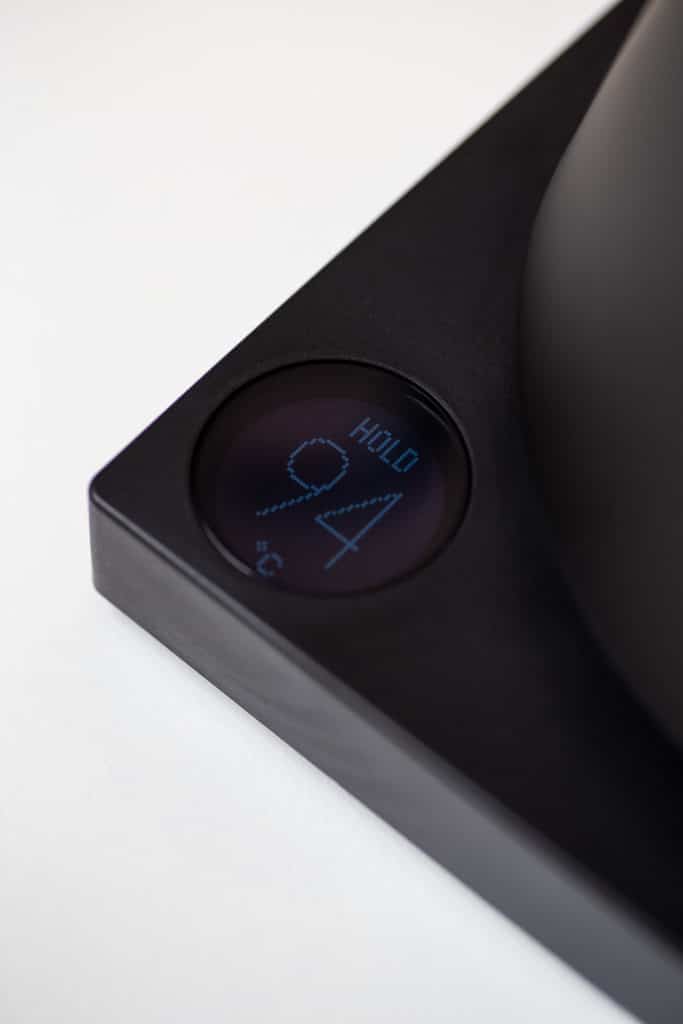
4. Rinse The Filter
Rinsing the paper filter is a non-negotiable. Not only does it remove any papery taste from the filter, it also warms the vessel your coffee will drip into.
Discard the water from the vessel afterwards, and the ability to do so should reiterate just how important choosing the right paper filters can be.
Now we’re ready for brewing …
5. Bloom With 35ml Water & Wait 40 Seconds
Add your ground coffee to the brewer, give the brewer a good tap or shake to ensure the coffee bed has settled to the bottom to help and even extraction, then start the Bloom by adding twice as much water as ground coffee.
The brewing process begins as you pour water in. Start your timer and try to get all the grounds wet.
You can do this by swirling the brewer or gently spooning through the grounds, making sure there are no dry clumps. Now we wait for 30 seconds – 40 seconds.
6. Add 170ml In 45 Seconds (4ml /sec)
Continue to pour water and distribute evenly in a circular motion. You want to aim to have this 170ml added by the 1:30min mark. This brewing method makes a considerable difference to the overall sweetness and body of the brew.
7. Add Remaining 75ml (2.5ml / sec)
You should then look to finish pouring water by 2:30min.
Total Coffee Brewing Time Shouldn’t Exceed 3:30min Once Dripping Has Stopped
Discard the coffee filter.
Tasting your coffee will be the tell how your extraction went. Let it cool just slightly to a drinkable temperature, and then try it.
A low extraction will taste sour, almost like someone has added a dash of lemon juice with not much flavour from the coffee.
Consider adjusting to a finer grind and seeing if a longer brew time will improve the taste. On the reverse, if it’s too bitter without any sweetness, or tastes ashy, adjust your grinder for coarser grounds.

How Important Is Water Temperature?
Freshly ground coffee, coffee grounds size, total brew time and dosage are all important factors in creating great filter coffee, but none of those variables matter when exposed to incorrect water temperature.
90ºC to 96ºC is the range where water-soluble flavour compounds most easily dissolve in water. Too hot and you over dissolve them, too cool and they won’t dissolve as easily.
Managing the relationship with water temp and grind size is an ongoing battle as you introduce different bean types, roasted at different times and switch between grinders.
Your first total brew, from a new bag of beans, will give you the learnings required to make your next coffee brewing experience better, which provides the sense of accomplishment so many come to love about pour over.
Let’s Check Out The Brewers
HARIO V60 Brew Kit – $44.90

The Hario V60 is by far the most popular pour over brewer on the market and their total brew kit is the easiest way to get started making good coffee without breaking the bank. You want to have a finer grind than usual with the V60 as there is only one large hole at the bottom, which will drain too quickly if the grounds are too coarse.
PROS
- It’s a very straightforward pour over device.
- Total brew time is short and cleaning up is easy
- A wide range of design and material options from glass to ceramic.
- Follow a default recipe and you’ll be rewarded.
CONS
- Generally considered a single cup brewer.
- Takes time to perfect pouring technique.
- Brewed coffee is better with a specialist kettle.
- Grind must be just right to achieve a good brew time.
Kalita Wave 185 – $51.95

The Kalita Wave 185 is a newer style, flat bottom brewer, which are fast becoming the preferred method for coffee brewing due to their consistent even extraction results across a variety of recipes. Thus, it’s probably the easiest brewer to get used to while still producing great results.
PROS
- A forgiving brewer that lets you experiment with good results.
- Cleaning up is super easy. It’s a pour over thing.
- Affordable and good quality.
- Comes in various sizes and materials.
CONS
- Generally considered a single cup brewer, but you could experiment.
- Has delicate wave-like filters that can collapse easily.
- Not as eye-catching as other brands.
Chemex Classic 6 Cup – $89.90

The Chemex Classic 6 Cup is as captivating to look at as it is to use, which is exactly why it sits graces the counters of so many kitchens and coffee shops. What separates Chemex from the brewers above is the filter paper they use, which is 4x thicker than regular filter or drip coffee devices, removing even the finest sediment particles as well as the undesirable coffee oils and fats. It’s important to keep an eye on grind size (you want it coarser) and total brew time as Chemex brewing has a tendency to go over the 4min mark, when ideally you want to finish at around 3:30min. Rinsing the filter is key.
PROS
- Easy on the eye.
- Cleaning up is a piece of cake.
- Makes a super smooth cup of coffee, due to the thickness of the paper filter.
- Can make upwards of 10 cups of coffee! This is a party brewer.
CONS
- Makes a ridiculously smooth cup of coffee, due to the thickness of the paper. Akin to tea.
- More expensive than other pour overs.
- Tends to brew too long.
- Being glass, it can break.
And lastly, because technology has afforded us the magic of automation, this wouldn’t be a complete list of brewing equipment without offering an automated pour over brewer. I bring you the Moccamaster.
Moccamaster Classic KB – $425.00

The Moccamaster Classic coffee maker is the ideal choice for homes and offices that need a great pot of coffee, as soon as possible. The Moccmaster can complete a total brew of 10 cups of coffee in under 5 mins and keep it warm all day. You could be thinking American coffee right now, but you couldn’t be further from the truth.

Moccamaster, inspired by the simple American drip coffee design, created a more efficient and temperature stable brewer that continues to dazzle coffee lovers around the globe. Remember 94ºC was the optimal brew temp? Just place your water in the tank, ground coffee in the filter and turn it on. The Moccamaster will do the coffee brewing without breaking a sweat.
PROS
- 10 cups of coffee in under 5 mins total brew time.
- 3 steps and you’re done, the rest is automated.
- Cleaning is a breeze.
- Cost effective brewing per cup of coffee.
- 15 colour options to choose from, plus other models that include a Thermos jug.
CONS
- Expensive outlay that pays off in the long run.
- Minimum cups it will make is 2-3.
- Bloom stage requires manual interaction.
- The carafe is glass and can break!
Where To Buy Your Coffee
As mentioned above, the quality of your coffee beans before you grind them is the single most important thing for your pour over coffee.
Again, Single O is one of the better options, and you can buy their beans online without having to visit the Sydney stores.
The original Surry Hills cafe has been standing tall since 2003, representing a significant move towards single-origin coffee in Sydney.
All their coffee beans sold online come labelled with expected brewing tips, and there’s an option for a regular subscription service so you’ll never be without a fresh bag to grind.
Other reliable roasters to buy coffee beans from include Ona in Canberra, Mecca Coffee in Sydney, Seven Seeds in Melbourne, St Ali in Melbourne, and The Coffee Barun in Adelaide.
Don’t be put off if your first experiment with pour over doesn’t work out as planned, just remember to always use freshly ground coffee and take the learnings from your last brew to your next. Don’t be afraid to mix it up by hopping around local coffee shops – in person or online – and your next cup of joe should be as close to perfection as home brewing can get.
Thanks to the team at Alternative Brewing for sharing their expertise. You can shop all things pour over at alternativebrewing.com.au
RELATED: The Rocket Porta Via Is The World’s First Truly Portable Espresso Machine
